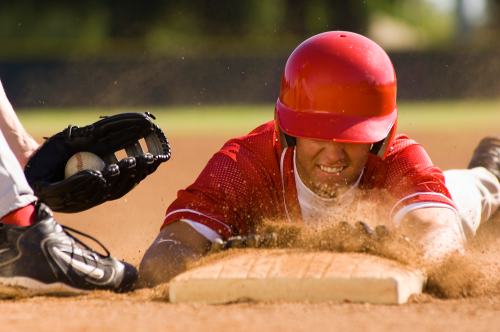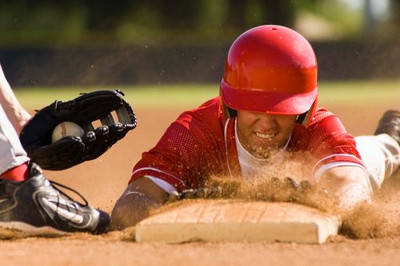 4th May 2017
4th May 2017
Treating Baseball Injuries with Physical Therapy

It’s officially baseball season, which means professional and amateur athletes are enjoying the nation’s past-time, which as a result means a higher occurrence in baseball related injuries. It doesn’t matter how great an athlete is, baseball injuries can happen at any time leading to:
- Increased pain
- Swelling & Edema
- Loss of work
- Reduced function in daily activities
Some of the most common baseball injuries include:
- Rotator cuff injuries - A rotator cuff injury is when one of the four rotator cuff muscles in the shoulder incurs a tear. The rotator cuff muscles are essential for stabilizing the shoulder joint. A torn rotator cuff is accompanied by sudden pain in the shoulder, which can radiate down the arm and cause a loss in range of motion.
- Shoulder Nerve Impingement – A shoulder nerve impingement is also swimmer’s shoulder or thrower’s shoulder and is caused by an impingement of the tendons found in the rotator cuff as they pass through the shoulder joint. Pain associated with a shoulder nerve impingement can be gradual, but no less severe than a tear and can also be accompanied by a loss in range of motion.
- Shoulder Subluxation - Shoulder subluxation also known as shoulder instability occurs when the shoulder partially dislocates and is an injury most often sustained by pitchers. By nature, the shoulder is meant to allow for a large range of motion which can lead to less stability if it’s accompanied by a weakness or injury to the stabilizing muscles. With a shoulder subluxation injury, there can be acute pain associated with what is called a “dead arm sensation” or feeling of numbness.
- Medial Epicondylitis - Medial Epicondylitis is also known as Thrower’s Elbow and Golfers elbow. And while this injury is similar to a tennis elbow injury, the location of the pain is different, with this pain located on the inside of the elbow. This type of injury occurs from overuse with acute injuries occurring mostly with pitchers who throw particularly hard or players with improper throwing body mechanics.
- Knee Injury - One of the most common activities to occur for a baseball player is running the bases. However, an impact against the knee or a sudden twist of the joint, like the kind a baseball player makes while rounding the bases, can injure the knee. Also, sudden changes in speed or direction, while stealing a base, for example, can injure the ligaments of the knee that hold the upper part of the leg to the lower part of the leg.
While this list isn’t exhaustive of all the baseball injuries, it shows the most common injuries that occur with baseball players that would require the help of physical therapy or rehabilitation in order to return to pain-free function. Physical therapists or sports rehabilitation specialists will utilize a number of modalities in order to return an athlete to the playing field.
The Top 5 Modalities to Treat Baseball Injuries
- Cold Compression Therapy: When a baseball play sustains an injury, the two most common symptoms are pain and swelling. With a device like a cold compression unit, it’s possible to address both symptoms simultaneously. The cold offers immediate analgesic pain-relief while the pneumatic compression helps reduce swelling at the site of the injury. Additionally, cold compression devices come with wraps compatible with all areas of the body, so it’s possible to address diverse pain issues: from low back pain to thrower’s elbow with one device.
- Whirlpool Therapy: Whirlpool therapy is an age-old therapeutic device, but it remains possible because it’s so effective for diverse injuries. From knee pain to rotator cuff injuries, warm water whirlpool therapy can help reduce pain and improve range of motion. What’s more, contrast therapy using both hot and cold, can be an effective technique for improving acute pain. Used at the beginning of a rehab session, therapeutic whirlpools can improve range of motion, while used at the end, it can help reduce any pain that may have been triggered as a result of the session.
- Ultrasound Therapy: Ultrasound therapy is a modality that offers maximum therapeutic benefit for baseball injuries. Not only can ultrasound therapy reduce pain and inflammation, therapeutic ultrasound can also initiate soft tissue and tendon repair in injuries for areas of the body like the knees. With multiple size soundhead applicators and different modes available, it’s also possible to treat all areas of the body for close surface injuries and those to the deeper tissues.
- Low Level Laser Therapy: A study published for the Journal of Laser Therapy found that low level laser therapy was beneficial in reducing pain and increasing function in sports injuries, especially medial epicondylitis. Low level laser therapy is a non-invasive treatment without any debilitating side effects and can be effective in short treatment sessions.
- Therapeutic & Functional Exercise: Part of rehabilitation is improving strength and endurance once acute pain and swelling has been reduced. Therapeutic Exercise and functional exercise can be accomplished with several different pieces of rehabilitation equipment.
- An underwater treadmill is a great choice to not only improve functional strength, but also helps improve cardiovascular output and endurance without any debilitating pressure on recovering joints.
- Another great tool to use to improve strength is therapy bands which provides progressive strength training without the need for heavy weights or gym equipment.
- Continuous Active Passive (CPM) Trainers: A CPM trainer is a wonderful device for improving range of motion. CPM trainers can be used for the shoulder, knee and ankle making it a valuable tool to restore full range of motion for the main joints responsible for running, throwing, pitching and catching.
When you’re a professional athlete like a baseball player, an injury can be career-ending or at the very least career-interrupting. The same can be said for weekend warriors that enjoy their off-times playing baseball and may have sustained an injury. Time is of the essence with athletes. Not only to reduce pain, but to return to full function on the playing field and in day to day activities.





